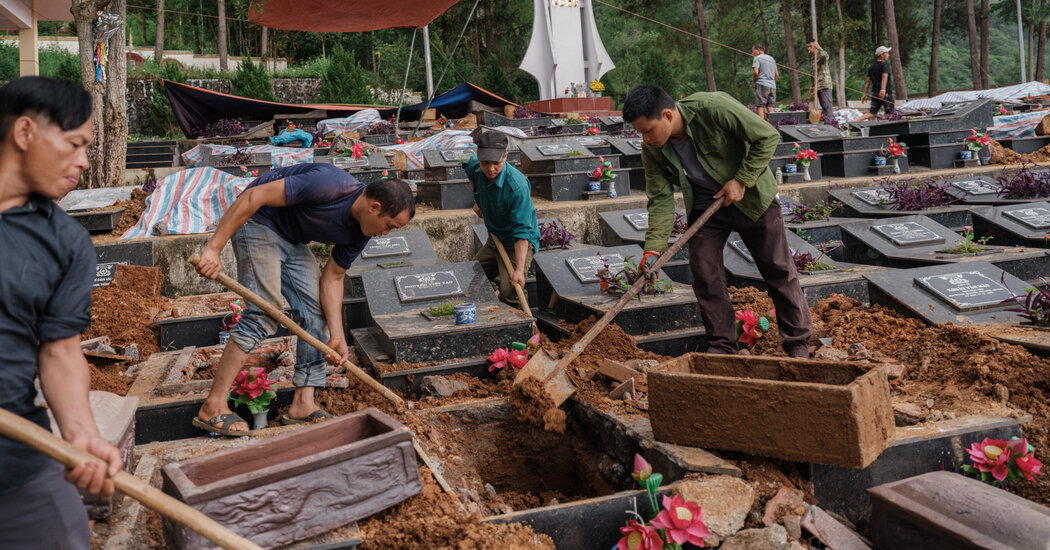By Damien Cave Linh Pham
The tombstones said “unknown martyr.” The bones were decades old and covered in reddish mud, staining the white lab coats of a half-dozen visiting scientists.
“This tooth good?” asked a junior researcher, holding up a jawbone pulled from a grave.
“No, too decayed,” said his boss, an experienced geneticist. “It has a copper dental crown.”
The search for around 2,600 missing Americans from the Vietnam War has been a first-order issue for Washington and Hanoi ever since the conflict ended. But on that humid June afternoon in northern Vietnam, grave diggers with Ph.D.’s were gathering the bones of Vietnam’s own missing warriors, whose ranks exceed one million, with an urgency and reverence befitting a task long overdue.
The scientists were there to advance a recent breakthrough by putting it to use. A few months earlier, they and their partners — including the International Commission on Missing Persons, in The Hague — had figured out the chemistry and computing required to identify remains as badly degraded as those often found in Vietnam’s acidic, tropical soil. For the first time, tiny snips of DNA taken from bones up to 70 years old could be used to link the country’s fallen soldiers to distant relatives, unlocking lost truths and deeper healing.
